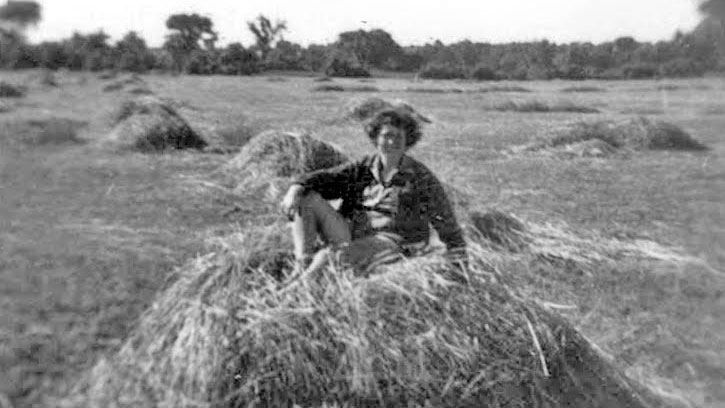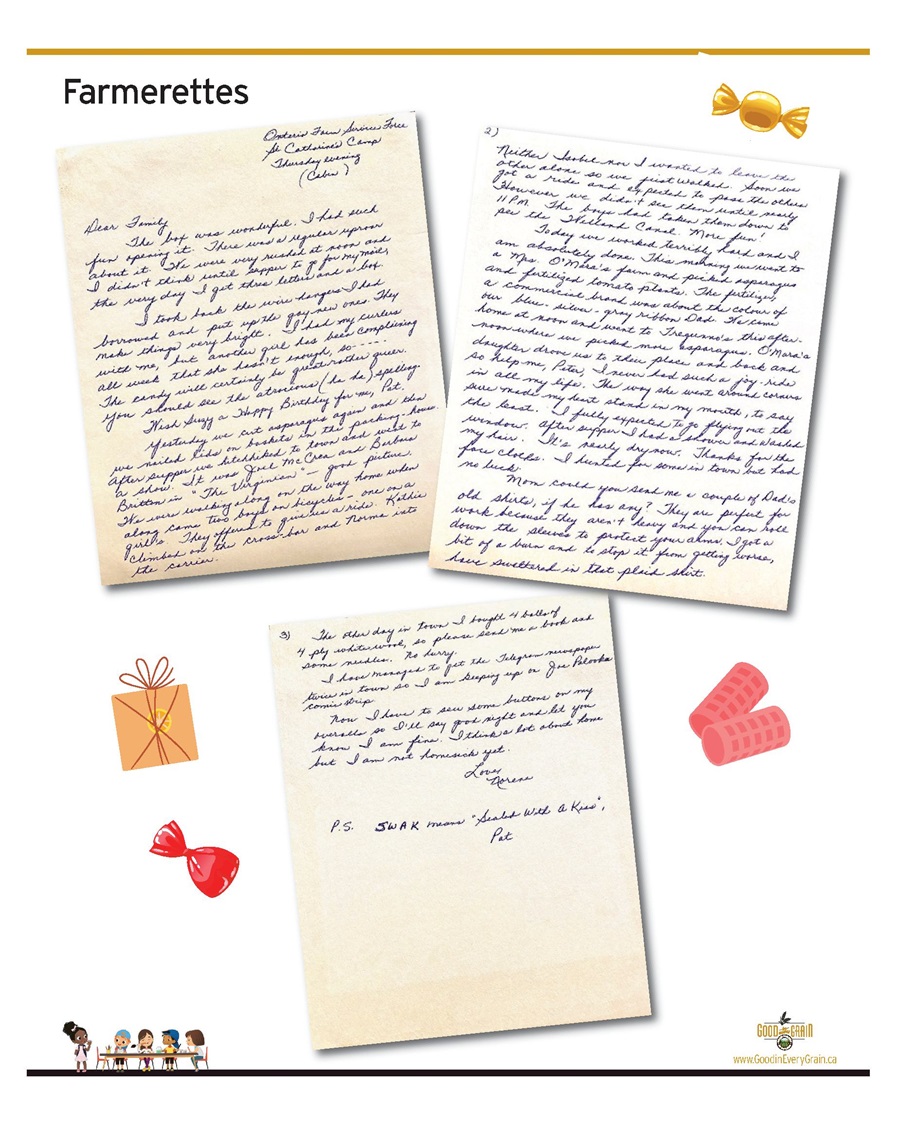Letters home

Farmerettes staying in touch
The Farmerettes were teenaged girls who worked on Ontario farms to feed Canadians during the Second World War. Many were away from home for the first time and homesick. Telephone calls were generally not possible—many people did not have phones.
Letters connected people and the Farmerettes wrote long letters home, telling their families what they were up to and requesting things they needed. They also saved memories in journals and collected autographs from new friends.
For service members deployed overseas, letters from home were a mainstay, bringing news and connecting them to family. Letters were carried in pockets across battlefields, over oceans, and through the air, a comfort in harrowing circumstances.
Today, in our digitally connected world, we have largely lost this form of communication. We have cheated ourselves by dropping the skill of cursive writing and the art of writing a letter.
Cursive is useful for more than a signature; research has shown that writing by hand aids the development of neural pathways that help with memory. It also helps critical thinking and expressiveness, lending itself to more authentic expression. And because cursive writing requires writers to think more deeply about what they want to say, it reinforces reading with comprehension.*
We provide a Farmerettes’ letter home to support the Ontario curriculum’s requirement to teach cursive. The letters show how people communicated and reveal insight into the writer and their experiences. They can serve as inspiration to support teaching cursive.
In addition, check out the Letters Home project from the Royal Canadian Legion. Enter your city or postal code to see letters written by military personnel—a digitized version with the original below. Many of the letters reflect life lived on a farm before the war. (Note: the site includes a request for donations to the Legion.)

- Why Cursive Handwriting Is Good for Your Brain | Psychology Today
- The importance of handwriting is becoming better understood (economist.com)
- The medium matters (economist.com)
- Benefits of Cursive Writing Practice (scholastic.com)
- Cursive writing to be reintroduced in Ontario schools | CTV News



